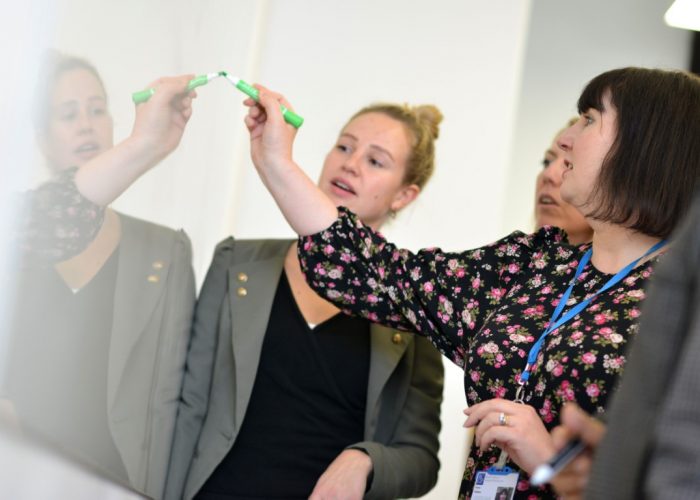 Predictive analytics can help address health problems at an early stage, improving both cost effectiveness and quality of life. Dhivya Subramaniam, Health Economist, explains how.
Predictive analytics can help address health problems at an early stage, improving both cost effectiveness and quality of life. Dhivya Subramaniam, Health Economist, explains how.
Health economists tend to look at healthcare from a holistic viewpoint, not just focusing on the simple ‘dollar value’ or cost of interventions, but also taking into account the value of patient outcomes and improved quality of life.
This means that people like me are always looking for better and innovative ways to measure the effectiveness of a treatment or service and the avoidance of ill health, based on the relatively new concept of value-based healthcare. Outcome measures previously tended to focus on areas such as how many people die in hospital, length of stay, survival rates for cancer within five years and so on. Those stats are all very useful, but they don’t tell us anything about quality – whether the patients with cancer enjoyed a good quality of life or were confined to bed due to pain or other complications of the cancer, or were too tired to do day-to-day activities – that’s the kind of value that patients care more about.
As a team we try to push that concept of value-based healthcare in terms of looking at things from the patient perspective – what is a patient benefit and how can we quantify it? Predictive analytics is one of the methods we can use to anticipate the real-life differences a new service or intervention can make. It involves bringing together and analysing large datasets to make predictions about what is likely to happen in certain scenarios. Those evidence-based predictions can then be used to inform commissioning and other decisions.
This is a significant step forward for health economists and analysts, and there are two main ways in which we can use predictive analytics – to help us look for patterns in data to better plan services, and to support us in our interactions with patients.
With predictive analytics, we can use computers with learning capabilities to recognise patterns in the same way that a human would by going through patient histories and finding common factors and variables that contribute to admissions. With computers we can do this on a much larger scale, taking into account as many patients as we want to put through the analysis.
The artificial intelligence (AI) within the computer then creates an algorithm to give a probability of, for example, a hospital admission, for each patient based on their history. Just knowing the probability wouldn’t be much use on its own but the AI can also show how it arrived at that probability and what factors were the biggest contributors in drawing that conclusion. For example, the AI may recognise that factors for an admission following a fall may be dementia, living in a nursing home, and multiple long-term conditions. It may also identify factors that make an individual more susceptible to an event happening or to developing a condition that may not previously have been taken into account, or it may highlight areas where there are gaps in care that offer opportunities for service improvement. With that knowledge, community services and GPs can try to optimise care to help their patients avoid an emergency admission – improving both quality of life and cost-effectiveness of care.
It’s all about matching what is economically feasible with what offers a better quality of life, where wellbeing and happiness are considered as closely as money.
For predictive analytics to be effective, we need access to as much data as possible. At ICHP we have access to large datasets including national Hospital Episodes Statistics (HES) data via NHS Digital – that’s 10 years’ worth of NHS inpatient stats – plus we have access to a unique system which links primary, secondary, mental health, community care and social care data for over two million people and 370 GP practices in North West London (the Whole Systems Integrated Care dataset). This means we can look not just at medical records, but also at how individuals interact with social services, meals on wheels and so on – all markers of how well, unwell or isolated someone is. With predictive analytics we can use this data to create algorithms which show the likelihood of, for example, an individual being admitted to a care home in the next 12 months – and how we might be able to keep them at a functional level that avoids this instead.
At ICHP we use our skills and experience to evaluate newly implemented innovations, looking at data and outcomes both before and after, to see how we are adding value and improving quality of life. Developments in AI and predictive analytics are no different, and it is important that they are subjected to a robust evaluation process to determine whether they do in fact fit in with the concept of value-based healthcare. This process is far from straightforward given the huge scope of AI and predictive analytics, and our team is working to identify the best methodology for their evaluation by considering the breadth of AI innovations available and the markers that best reflect their ability to improve the value of healthcare services.
While the real-life benefits of the service changes that we could implement through utilisation of predictive analytics may not always be expressed as financial savings, they can be much bigger than people realise and play an increasing role in decisions around healthcare commissioning.



